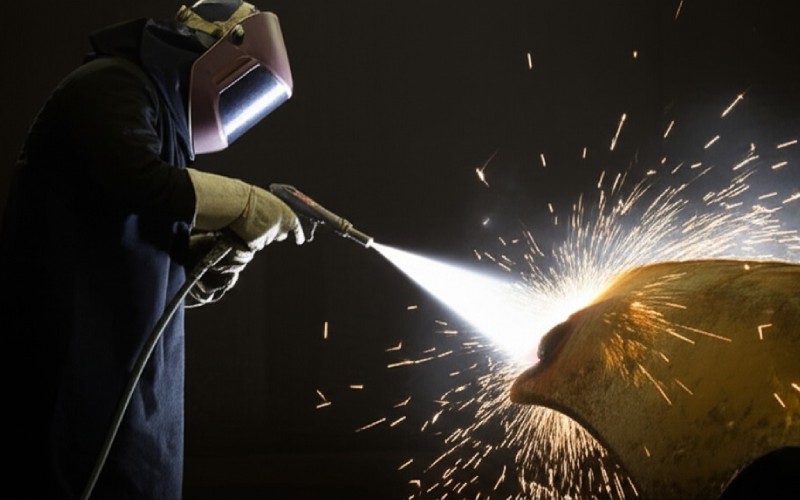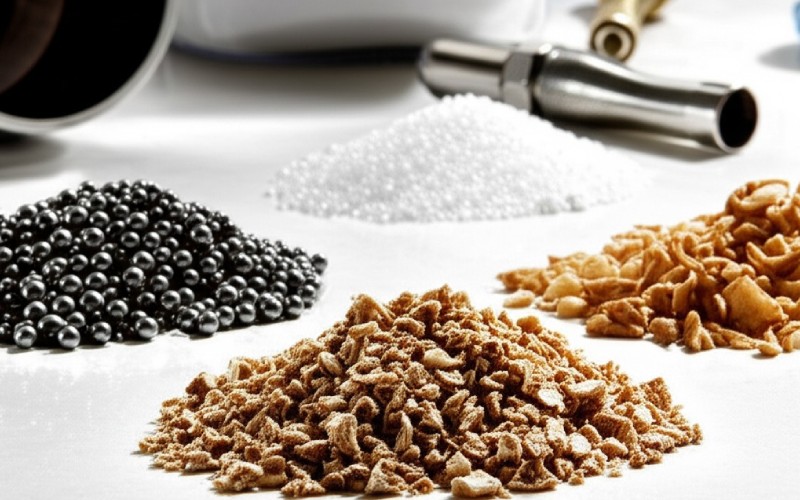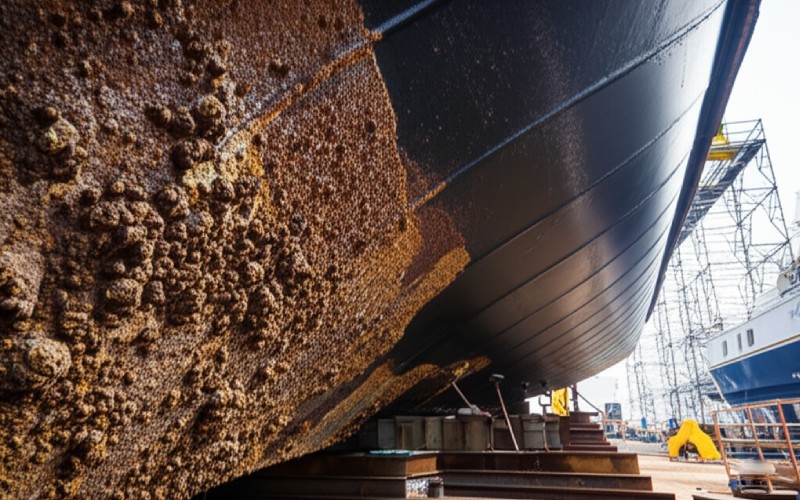Deje que Istar le ayude a poner en marcha su proyecto con nuestra experiencia y conocimientos.
Cargue sus archivos de diseño y requisitos de producción y nos pondremos en contacto con usted en menos de 30 minutos.

This article is for you if you have actually ever questioned what media blasting is everything about. We will certainly cover everything you need to understand. We will certainly talk about how it works, the different kinds, and just how to select the right method for your job. After reviewing this, you will certainly recognize how to get the perfect finish for any surface preparation task.
So, what is media blasting? Think about it like a really effective cleaning method. A device makes use of pressed air to fire tiny bits at a surface at a really broadband. These fragments are called the “blasting media.” This effective blast of media strips away old paint, rust, dirt, or any type of other coating. It is just one of the most effective ways to take care of surface preparation.
I have actually used media blasting for all types of jobs. It’s perfect for cleansing and preparing a surface area before painting or using a new coating. The force of the blast not only eliminates the old coating, but it can also create a rough appearance on the surface. This aids the new paint or powder coating to stick far better. However, media blasting can do more than just clean. A special type called shot peening utilizes the blast to make metal components stronger and last longer by developing what’s called compressive stress and strain. It’s a key step in any significant restoration project.
The objective of any kind of media blasting task is to get rid of a contaminant from a substrate. The “substrate” is just a fancy word for the surface area you are working with. The “contaminant” is whatever you intend to remove, like a hard coating of old paint. The blast does away with the bad things without injuring the excellent things underneath.
I often listen to people refer to media blasting merely as sand blasting. This is a common mix-up, yet there is an essential distinction. Sand blasting is just one particular sort of media blasting. It was the initial method, where contractors and painters would blast surface areas utilizing silica sand as an abrasive. It worked well, yet it had an extremely major issue.
The dirt from silica sand is dangerous to breathe. We currently find out about silicosis, a lung condition triggered by breathing in this dirt. Because of this wellness danger, the surface preparation market has actually mostly moved far from utilizing silica sand. Using sand as an abrasive selection is currently heavily regulated or perhaps restricted in several areas.
So, all sand blasting is a type of media blasting; however, not all media blasting is sand blasting. Today, we have several more secure and much better abrasive materials to pick from. When you listen to individuals refer to media blasting, they are speaking about the entire family of blast techniques, a lot of which do not use sand.
This is an additional excellent concern. I obtain a great deal. For the most part, yes, abrasive blasting and media blasting mean the same thing. The procedure entails using an abrasive product to blast a surface tidy. The term “abrasive blasting” concentrates on the sandy, cleaning nature of the media. It highlights how the media scours away a coating or rust.
Nonetheless, some sorts of media blasting are not extremely abrasive. A good example is soda blasting. It utilizes baking soda, which is a very soft material. It’s a gentler procedure that cleanses without harming the substrate underneath. Another instance is solidified carbon dioxide blasting, which cleans with frozen gas and leaves no mess.
Think of it by doing this: media blasting is the large umbrella term. It covers every kind of blast cleaning, from a rough blast with steel grit to a soft blast with corn cob. Abrasive blasting is what we call it when we are using a hard, abrasive material to handle laborious tasks, like removing tough coverings.
The “media” in media blasting is the trick to its success. There are various media types you can use. Choosing the right abrasive media is one of the most vital actions for a good blast result. The media used will depend upon what you are trying to clean and what the surface is constructed from.
Below are a few of the common media blasting selections, from tough to gentle:

Picking the appropriate media can feel challenging, but it’s straightforward if you ask 2 questions. Initially, what is my substrate? Second, what kind of coating or contaminant am I trying to get rid of? You do not want to make use of a powerful abrasive on a soft surface, as it might create damages.
For tough jobs, like removing old paint and rust from a steel structure, you require a solid abrasive media. I would certainly think about making use of an angular abrasive like crushed glass to reduce with that challenging coating. The sharp edges of an angular abrasive like crushed glass will bite into the surface and strip it tidy. This will certainly also profile the substrate, developing little tops and valleys for new paint to hold.
For more fragile surfaces, you need a gentler approach. If you are cleansing an old wood furniture piece or a delicate vehicle component made of aluminum, a rough blast would certainly wreck it. For these tasks, a soft abrasive like crushed walnut shells or corn cob grit is a much better choice. These will certainly get rid of finishes without harming the surface below. The trick is to test a tiny, surprise area first before you blast the whole point.
I wish to spend a bit even more time on soda blasting due to the fact that it’s an unique sort of media blasting. Instead of a tough abrasive, soda blasting makes use of salt bicarbonate — which is simply plain baking soda. The bits of baking soda are soft and they ruin on impact. This makes the blast extremely mild.
So when should you utilize it? Soda blasting is terrific for jobs that need mindful cleaning. It’s perfect for restoration service old cars and trucks, where you wish to get rid of the paint yet not damage the initial metal or chrome trim. It’s additionally used to tidy historic things and even food processing tools due to the fact that it is non-toxic. Since it uses bicarbonate, it also aids to remove odors, making it fantastic for fire restoration.
The very best aspect of soda blasting is that it doesn’t produce heat or warp thin metal panels. An effective abrasive blast can bend slim metal, however a soft drink blast will not. It is a wonderful option for cleaning up a selection of surface areas where you need a soft touch. It’s a really beneficial tool in the world of blasting and soda blasting.
There are 2 main ways to execute media blasting: dry blasting and wet blasting. Both approaches use a blast pot and a compressor to blast a surface area clean, yet they work a little in a different way.
Dry blasting is one of the most usual method. In this arrangement, an effective “pressure pot” system presses the abrasive media out with pressed air for laborious. For smaller components in a blast closet, a less complex “suction feed” system could be utilized. The most biggest downside to any dry blast is the dust. A dry blast can develop a substantial cloud of dirt from the abrasive and the coating being eliminated.
Wet blasting, in some cases called dustless blasting, mixes a small amount of water with the abrasive in the blast stream. This makes the media blasting or dry process much cleaner. The water traps the dirt, so it just is up to the ground. Making use of dustless blasting tools additionally keeps the surface cool, which prevents slim steel from warping. Some systems also mix in a rust inhibitor to quit “flash rust” from basing on the fresh steel.
One means to conserve cash on a big media blasting job is to redeem and recycle spent media. But can you do this with all sorts of blasting media? The answer is no. Whether you can reuse invested media depends upon the kind of abrasive you are using and its hardness.
More-challenging abrasive materials like steel grit, glass beads, or aluminum oxide can be reused lot of times before needing to be changed. When these bits blast a surface, they don’t damage down quickly. You can accumulate them, look out the dust and old coating particles, and placed them back in your blast pot. They might not be fairly as effective as the very first time you used them, yet they still function well. The variety of times you can do this depends upon the characteristics of your abrasive.
Softer media, nonetheless, can not be recycled. Materials like baking soda or walnut coverings are created to crush on effect. They are a one-time-use abrasive. When they struck the surface, the fragment shatters into dirt. If you tried to reuse it, you wouldn’t have anything entrusted to blast with!

If you intend to begin a media blasting service or just do a project yourself, you will require some gear. For tiny parts, you can utilize a blast cabinet. This is a covered box with handwear covers that lets you blast things securely within. For bigger jobs, you’ll need a mobile configuration. The heart of any type of media blasting arrangement is the air compressor. You require a large compressor that can supply a lot of air, gauged in cubic feet per minute (CFM).
Next off, you require a blast pot. This is the pressurized tank that holds your blasting media. It is very important to have a wetness separator on your compressor to maintain the air completely dry, or else your media can glob up in the blast pot. From the blast pot, a thick hose pipe goes to the nozzle. At the nozzle, there’s typically a remote switch. This is an essential safety feature that allows you stop the blast quickly if you require to.
Obviously, safety equipment is a must. You require an unique headgear with its own air supply to shield your head and lungs from the effective blast. You likewise require thick handwear covers and a tough match to shield your skin. Never ever try to blast anything without the correct safety and security equipment. It is unworthy the risk.
I get asked a great deal of questions regarding media blasting. Right here are answers to a couple of typical ones. This area is made to quickly answer some continuing to be factors on this blasting and soda blasting subject.
After a steel component is made, it can have sharp sides called “burrs.” Media blasting is a wonderful method to get rid of these burrs. A fast blast with a tool like glass beads can smooth these edges, making the part safer and work far better. It’s generally made use of for cleansing and finishing repairs.
When you blast a metal surface with an abrasive media, it produces a harsh structure. This is called a “profile.” This profile assists a brand-new coating, like paint or powder coating, to stay with the metal. A great profile is key for a long-lasting surface. The blast prepares the surface area flawlessly.
Yes! Media blasting is among the most effective methods to prepare metal for a solid weld. An excellent blast will certainly get rid of all the paint, rust, oil, and scale. This leaves you with pure, clean metal. A clean surface area is necessary for a clean, strong weld. I always blast my parts prior to I weld them.
To wrap up, here are the most vital things to bear in mind regarding media blasting: